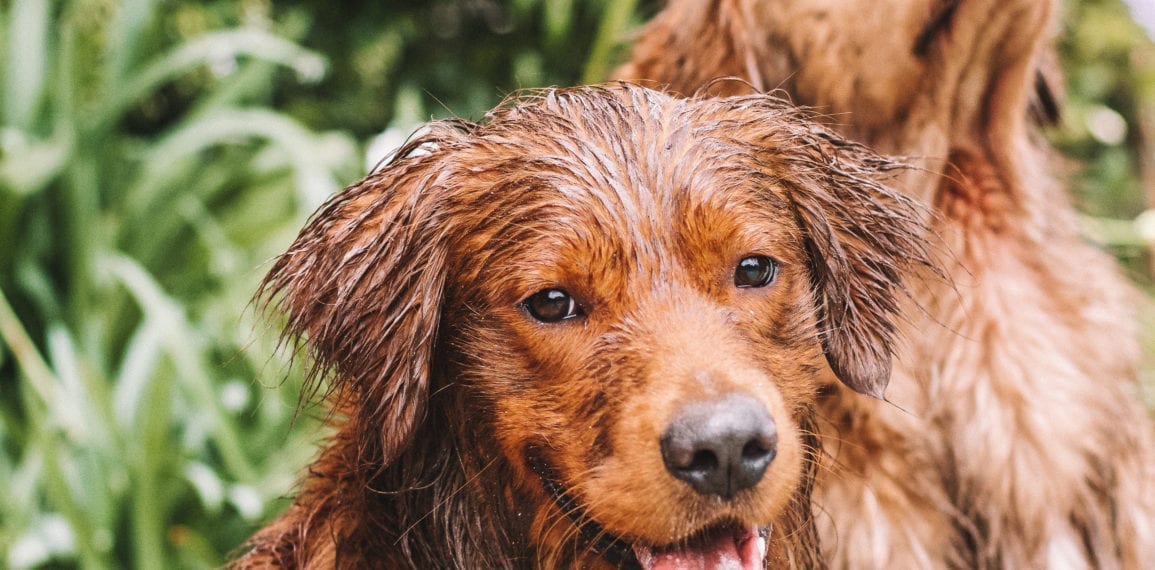One of the hardest parts of rescuing a dog is getting the new dog to integrate well with your current doggies at home. Many people fail to realize how critical this step is which can cause a ton of problems down the road. Speaking from experience, we have two Goldens of our own and made the mistake of bringing our new rescue into our home way too soon. In hopes to avoid the fights we personally encountered, we have since hired Alyssa Rose, a Certified Professional Dog Trainer and Behavior Specialist to help share some tips on the best ways to integrate dogs, here is what we’ve learned from Alyssa at Legends Dog Training here in San Diego, CA.
For additional support and guidance, Alyssa is available for online and phone consultations, and for anyone local, she does in-home boarding programs as well. To set up a consultation for your new adopted dog you can contact her at [email protected] or by calling 619-431-1233.
Things to Never Do-
- Never rush the introductions. Give the new dog at least 2-3 days of dog-free rest before planning any introductions. We tried to skip this step and it went terribly. Your new dog can be in fight or flight mode and this can trigger various aggressive or defensive reactions.
- Never bring the new dog into your home without a meeting on neutral territory first.
- Never force dogs to meet, sniff or to play.
- Never have dogs meet between a fence or gate. This can create barrier aggression and is not always a productive way to say hi to a new dog.
- Never let them off-leash until various leashed meetings have been a success. Leashes can cause aggression but we will outline below.
Things to Try Instead-
6/7/2018 Written by Alyssa Rose, Certified Professional Dog Trainer.
Neutrality-
Minimize friction by being proactive. Put away the toys, keep bones in the cabinet, block access to socially significant areas (ie. sofas and beds), and avoid giving attention that could potentially spur conflict. Preventing fights through management is just as important as the next step: forging a bond.
Forging a Bond-
Take them for long walks in places that neither one of them has ever been, the more often you do this, the better! Not only are they less likely to get into fights when they are on neutral ground, but it will also help them to become friends. Migrating, sniffing and exploring new territory will make them feel like a pack.
Developing Positive Associations-
Positive reinforcement training that rewards sitting, lying down, and “going to place” helps us and our dogs focus on desirable behavior, and can simultaneously condition these dogs to feel calm, comfortable and relaxed in each other’s presence. Pack some treats on your outings and reward any good behaviors you may see.
Positive reinforcement training that rewards sitting, lying down, and “going to place” helps us and our dogs focus on desirable behavior, and can simultaneously condition these dogs to feel calm, comfortable and relaxed in each other’s presence. Pack some treats on your outings and reward any good behaviors you may see.
What to do if you notice tension?
Tension can come in a variety of ways, growling, hard stares, snarling. Be Calm! Yelling, screaming, reprimanding or frenzied actions will make matters worse. Aggression stems from stress, if you are feeling nervous or uneasy you are likely going to feed into your dog’s aggressive behavior. Be Prepared. Have dogs drag a short leash at home (when supervised). Now if you notice tension you can calmly walk up to the dog, pick up the leash and call him (or lead him) away from the other dog. Abruptly grabbing a dog’s collar is often a sure-fire way to start a fight.
Warning Signs are Good!
Be thankful for growling, snarling, and air snaps; this is a dog’s way of communicating that they are feeling stressed, and is the perfect time to calmly diffuse the situation. Many people want to “correct” their dog for exhibiting these signs, and believe that this is the best way to “teach a dog not to be aggressive.” In reality, they are only addressing the symptoms not the underlying cause of the problem. The other most unfortunate side-effect of “correcting” warning signs is that your dog will learn to suppress warning signs and go straight into fight mode. Have you ever heard people say “There was no warning, my dog just attacked!”? Corrections can teach dogs to suppress the symptoms of aggression, but will NOT teach your dog not to be aggressive.
What to Do If Your Dogs Fight-
Break the fight up, and separate the dogs for 2 or 3 minutes, or until they are calm. Now, take them for a walk. Reintroducing dogs in a calm, controlled, positive fashion will ensure that neither dog will harbor resentment and make the rivalry worse.
Additional Support-
As you can see, integrating dogs into the home is not as easy as many imagine so setting you and your new doggy up for success is key to the overall wellbeing of the home. If you feel overwhelmed or still need additional help, our trainer is available for online or telephone consultations or in-person for those local to San Diego.
If you have questions or would like to set up a consultation for your newly adopted dog, you can contact her at [email protected] or by calling 619-431-1233. To learn more about the services they offer you can go to www.legendsdogtraining.com








Recent Comments